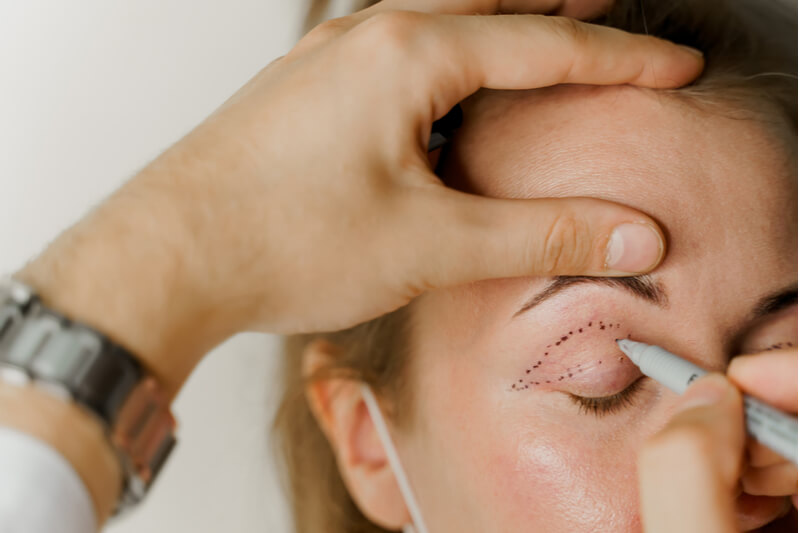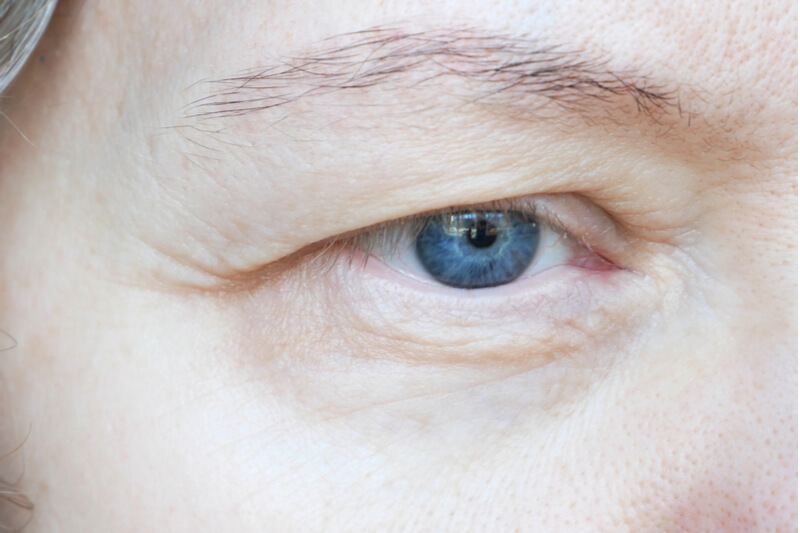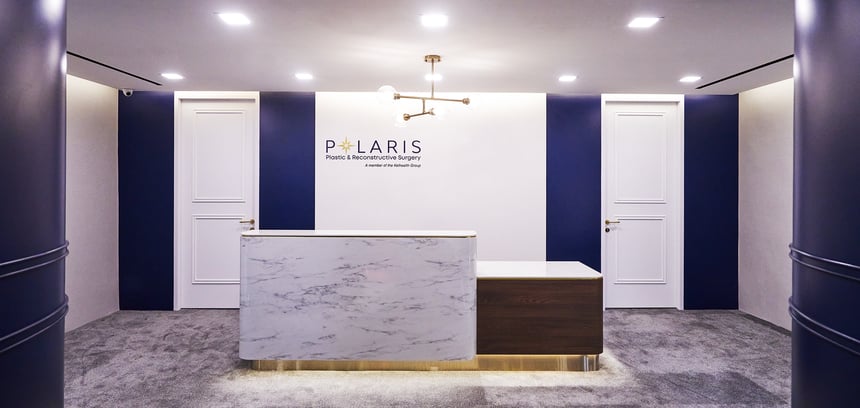Articles
Ptosis Surgery in Singapore: All You Need to Know In 2023
Ptosis surgery in Singapore is a procedure performed on the eyelid designed to lift the eyelid and remove skin that may be obstructing vision. It is a medical condition that can be congenital or acquired, most typically caused by the ageing process (involutional ptosis). If severe enough, ptosis can block the upper visual fields. A simple surgical procedure can help to reverse ptosis and help patient’s see clearly again.
Besides functional reasons, droopy eyelids (ptosis) can also make you appear tired or unwell, which may affect your personal or professional life. Ptosis surgery can also help to improve an individual’s appearance and aesthetics.
What does ptosis surgery in Singapore involve?
To determine if a ptosis surgery is needed, your plastic surgeon will assess the severity of the ptosis, and an ophthalmologist can carry out a visual field function test determine the severity of your condition. They will also assess your age and general health and fitness before determining the best option for your condition.

Ptosis surgery consists of tightening the muscles of the upper eyelid. The main voluntary muscle which lifts the eyelid is the levator palpabrae superioris (LPS) and the secondary (involuntary) muscle is the Mullers Muscle. There are typically two techniques that are available for ptosis correction. Techniques which tighten the LPS are considered anterior approaches and are more powerful in the correction of ptosis. In mild ptosis, procedures which tighten or shorten the Mullers muscle may suffice. In severe cases where the muscle of the upper eyelid are poorly functioning, the frontalis muscle of the forehead can be used to correct the ptosis. Each technique has its own indications, advantages, and disadvantages depending on the type and cause of ptosis, its severity, as well as the patient’s age.
The procedure is most commonly carried out under local anaesthesia as opposed to general anaesthesia. This allows the surgeon to assess the symmetry of the ptosis correction during the procedure by asking you to open your eyes in both the lying and sitting position. Moderate sedation can be used as a compromise, which allows the local anaesthetic to be injected whilst you are sleeping. The sedation can be lightened at the point where the eyelid position needs to be assessed.
Facts about ptosis surgery in Singapore
Ptosis surgery in general has a high success rate of 95% for treating droopy or asymmetrical eyelids in one sitting. It is a common treatment in Singapore and one that most board-certified surgeons are well versed in.
There are a few possible complications that could arise from ptosis surgery. One of the more common complications is under- or overcorrection. A one millimetre difference in eyelid height is noticeable by most, and factors such as intra-operative swelling, the unwanted influence of local anaesthesia, and inherent imbalances in the muscles of both upper eyelids can lead to difficulty in assessing symmetry during the procedure. If this does occur, a further minor operation is offered early to correct the asymmetry, both in the early or the late post-operative period.

Before deciding to have ptosis surgery in Singapore, it is important to understand what it can and cannot treat. Ptosis surgery is successful in the treatment of:
- Drooping eyelids
- Excess skin on the eyelid
- Lazy eye development (in children)
- Weak eye muscles
Ptosis surgery can improve the look of the eye area as a result of the medical treatment despite aesthetics not being its main aim. However, you may wish to combine your ptosis surgery with another procedure such as a browlift or lower eyelid surgery to maximize the anti-ageing results.
Recovery after ptosis surgery
Recovery after ptosis surgery generally follows a predictable path. The maximal swelling is in the first 2 days post surgery. If anterior approaches are used, there are typically sutures to be removed at 5-7 days after the procedure. By 2 weeks post surgery, about 70-80% of swelling would have settled, and it is at this point when you can return to full activity including swimming, make-up and exercise. It is also at this point where any minor correction, if required, can be performed. The final result of the ptosis surgery is at 3-6 months post surgery, and should last you for many years.
Cost of ptosis surgery in Singapore (2023)
The costs for ptosis surgery procedures in Singapore starts from $5,000 for both eyes, and it depends on many factors. These include whether you require treatment of just one or both eyelids, the severity and length of your surgery, and whether the surgery is performed under local anaesthesia or sedation.
Other factors can include the location of your procedure, and the experience of your surgeon.
In cases where the ptosis is affecting your field of vision, it can be potentially insurance claimable.
Where do I go for ptosis surgery?

It is important to do your research when choosing the clinic and to ask your surgeon the right kinds of questions. Things to look out for include:
1. Board certification
A board-certified, academy accredited surgeon is one who has undergone rigourous training in their field and have reached the highest standards of professional accreditation. It means that they have received a seal of approval for advanced knowledge and expertise.
2. Experience
It is always good to find out if the treatment you are looking for is one that the surgeon performs regularly. Ask to see before and after photos from previous patients and make sure you read reviews online to determine if that surgeon is right for you.
3. Clinic accreditation
In Singapore, there are certain industry standards that a clinic must uphold to become accredited. An MOH-accredited clinic has met the safety standards required, employs the most appropriate and up-to-date technology, and offer a thorough patient assessment and service experience.
By choosing an accredited clinic, you are assured of a level of care that will keep you safe and will work with you to achieve your desires.
4. Comprehensive aftercare plan
A good surgeon and clinic will be invested in your aftercare, particularly in terms of follow-up appointments that assesses whether the healing process is going as it should and that there are no complications. They will also be willing to perform a follow-up operation if anything is not right, for example, in cases of over- or under-correction.
For peace of mind and to ensure you get the best possible results from your ptosis correction surgery in Singapore, make sure you book a consultation with an experienced plastic surgeon and undergo a comprehensive assessment of your condition before committing to your treatment.
Why choose Polaris Plastic & Reconstructive Surgery?

At Polaris Plastic & Reconstructive Surgery, we integrate modern techniques to curate tailor-made treatments to fit your needs and goals. Our consultant plastic surgeons are MOH-accredited, board-certified plastic surgeons with extensive training and experience in aesthetic surgery, and have performed plastic surgery including ptosis correction for thousands of clients.
Schedule an appointment with our surgeons today to learn about your options for ptosis correction.
Contact Form
1 Orchard Boulevard #10-08 Camden Medical Centre, Singapore 248649
6 Napier Rd, #08-01 Gleneagles Medical Center, Singapore 258499
Tel: +65 6737 4565 | Mobile: +65 8828 4565 | Email: clinic@polarisplasticsurgery.com | Business Hours: Mon - Fri: 9am - 6pm | Sat: 9am - 1pm | Sun/Ph: Closed











